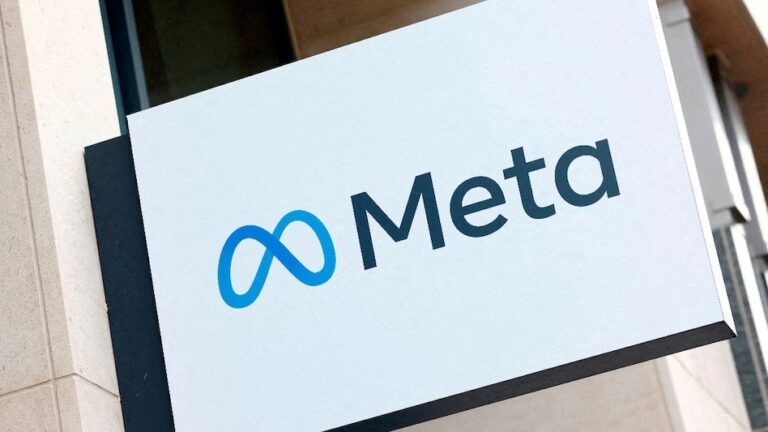
In a groundbreaking move, Meta (formerly Facebook) has announced an ambitious plan to lay a 50,000-kilometer undersea cable network that will connect India to global digital infrastructure by 2030. This project, known as Project Waterworth, aims to revolutionize internet connectivity, boost digital economies, and bridge the digital divide between India and the rest of the world. With India being one of the fastest-growing digital markets, this initiative is set to play a pivotal role in shaping the country’s technological future.
What is Project Waterworth?
Project Waterworth is Meta’s massive undersea cable initiative designed to enhance global internet connectivity. The 50,000-kilometer cable network will link India to key digital hubs across the globe, ensuring faster, more reliable, and affordable internet access. This project is part of Meta’s broader vision to create a more connected world, where even remote areas can benefit from high-speed internet.
The undersea cable will pass through multiple regions, connecting India to countries in Europe, the Middle East, and Southeast Asia. By 2030, Project Waterworth is expected to significantly improve India’s digital infrastructure, making it a central player in the global digital economy.
Why is This Project Important for India?
India is home to over 1.4 billion people, with more than 800 million internet users. However, internet penetration and speed vary widely across the country, especially in rural areas. Project Waterworth aims to address these challenges by providing a robust and scalable digital backbone. Here’s why this project is a game-changer for India:
- Improved Internet Speeds: The undersea cable will enable faster data transfer rates, reducing latency and improving user experience for millions of Indians.
- Economic Growth: Enhanced connectivity will boost industries like e-commerce, education, healthcare, and IT services, contributing to India’s GDP.
- Digital Inclusion: By connecting remote and underserved areas, Project Waterworth will help bridge the digital divide, ensuring that more people can access online resources and opportunities.
- Global Collaboration: The project will strengthen India’s ties with global digital networks, fostering innovation and collaboration.
How Will Project Waterworth Work?
The undersea cable network will consist of high-capacity fiber-optic cables laid on the ocean floor. These cables are designed to withstand harsh underwater conditions and provide reliable connectivity for decades. Here’s a breakdown of how the project will be implemented:
- Route Planning: The 50,000-kilometer cable will pass through strategic locations, connecting India to major digital hubs like Singapore, Dubai, and Marseille.
- Installation: Specialized ships will lay the cables on the ocean floor, ensuring minimal disruption to marine ecosystems.
- Maintenance: Advanced monitoring systems will be used to detect and repair any damage to the cables, ensuring uninterrupted service.
- Integration: The undersea cable will be integrated with existing terrestrial networks in India, creating a seamless digital infrastructure.
Also, Read: PM, Amit Shah, and Rahul Gandhi to Meet on Feb 17 To Pick Next CEC
Challenges and Solutions
While Project Waterworth is a promising initiative, it comes with its own set of challenges. Here are some of the key obstacles and how Meta plans to address them:
- Environmental Concerns: Laying undersea cables can impact marine ecosystems. Meta has committed to using eco-friendly technologies and working with environmental experts to minimize the project’s ecological footprint.
- Technical Complexity: Building and maintaining a 50,000-kilometer cable network is no small feat. Meta will leverage cutting-edge technology and collaborate with global partners to ensure the project’s success.
- Regulatory Hurdles: The project will require approvals from multiple governments and regulatory bodies. Meta is working closely with authorities to navigate these challenges and ensure compliance with local laws.
Impact on India’s Digital Economy
Project Waterworth is expected to have a transformative impact on India’s digital economy. Here’s how:
- E-commerce Growth: Faster internet speeds will enable smoother online transactions, boosting e-commerce platforms and digital payments.
- Education and Healthcare: Improved connectivity will facilitate online education and telemedicine, making these services accessible to more people.
- Startups and Innovation: A robust digital infrastructure will encourage startups and tech companies to innovate and expand their operations.
- Job Creation: The project will create thousands of jobs in construction, maintenance, and IT sectors, contributing to India’s employment growth.
Global Significance of Project Waterworth
Project Waterworth is not just about connecting India; it’s about creating a more interconnected world. By linking India to global digital networks, the project will:
- Enhance Global Trade: Faster and more reliable internet will facilitate cross-border trade and collaboration.
- Strengthen Cybersecurity: The undersea cable will include advanced security features, protecting data from cyber threats.
- Promote Digital Equality: The project will help bridge the digital divide between developed and developing nations, promoting global digital equality.
What’s Next for Project Waterworth?
The timeline for Project Waterworth is ambitious but achievable. Here’s what to expect in the coming years:
- 2023-2025: Planning and route finalization, including environmental assessments and regulatory approvals.
- 2025-2028: Cable laying and installation, with a focus on minimizing environmental impact.
- 2028-2030: Integration with existing networks and testing to ensure seamless connectivity.
By 2030, Project Waterworth is expected to be fully operational, transforming India’s digital landscape and connecting it to the world like never before.
Conclusion: A Digital Revolution in the Making
Meta’s Project Waterworth is more than just an undersea cable project; it’s a vision for a more connected and inclusive world. By linking India to global digital networks, the initiative will unlock new opportunities for economic growth, innovation, and social development. As the project progresses, it will serve as a testament to the power of technology in bridging gaps and creating a better future for all.
With Project Waterworth, Meta is not just building a cable network; it’s laying the foundation for a digital revolution that will benefit millions of people across India and beyond. By 2030, this ambitious project will have transformed the way we connect, communicate, and collaborate, making the world a smaller and more connected place.
Read more: How To Ensure OpenAI Does Not Store Your API Information